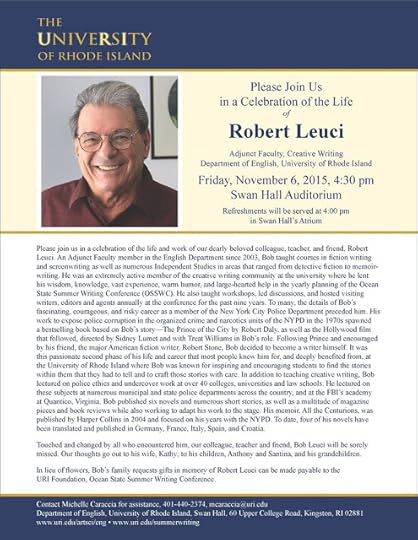Andy Thibault's Blog, page 22
October 26, 2015
Celebration of the life of Bob Leuci, University of Rhode Island, 11-6-15
Published on October 26, 2015 07:03
October 23, 2015
Hartford Public Library’s One Book One Hartford 2015: James Baldwin’s ‘If Beale Street Could Talk’
Cool Justice Editor's Note: STAY TUNED - The Library will offer a variety of public programming for all ages throughout the fall to connect the community to this inspirational story.
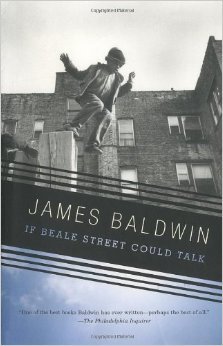

“Neither love nor terror makes one blind:
indifference makes one blind.”
- James Baldwin
Contact:Matthew K. Poland
Chief Executive Officer
860-695-6303
mpoland@hplct.org
@HPLCT
@mkpoland
Hartford, Connecticut [FALL, 2015)– Hartford Public Library announced … that this year’s selection for ONE BOOK ONE HARTFORD is If Beale Street Could Talk, a love story set in Harlem in the 1970s. The title is a reference to the 1916 W. C. Handy’s blues song “Beale Street Blues.”
Louis Armstrong rendition: Beale Street Blues
In this honest and stunning novel, James Baldwin penned a moving story of love in the face of injustice. Told through the eyes of Tish, a nineteen-year-old girl, in love with Fonny, a young sculptor who is the father of her child, Baldwin's story mixes the sweet and the sad. Tish and Fonny have pledged to get married, but Fonny is falsely accused of a terrible crime and imprisoned. Their families set out to clear his name, and as they face an uncertain future, the young lovers experience a kaleidoscope of emotions – affection, despair, and hope. In a love story that evokes the blues, where passion and sadness are inevitably intertwined, Baldwin has created two characters so alive and profoundly realized that they are unforgettably ingrained in the American psyche.
The Library will offer a variety of public programming for all ages throughout the fall to connect the community to this inspirational story.
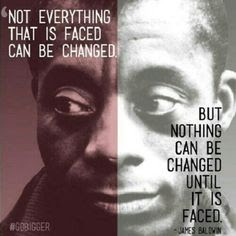 James Arthur Baldwin was born in Harlem, New York City, Aug. 2, 1924 and died on Nov. 30, 1987. He offered a vital literary voice during the era of civil rights activism in the 1950s and ‘60s. The eldest of nine children, his stepfather was a minister. At age 14, Baldwin became a preacher at the small Fireside Pentecostal Church in Harlem. After he graduated from high school, he moved to Greenwich Village. In the early 1940s, he transferred his faith from religion to literature. Critics, however, note the impassioned cadences of Black churches are still evident in his writing. Go Tell It on the Mountain (1953), his first novel, is a partially autobiographical account of his youth. His essay collections [Notes of a Native Son (1955), Nobody Knows My Name (1961), and The Fire Next Time (1963)] were influential in informing a large white audience.
James Arthur Baldwin was born in Harlem, New York City, Aug. 2, 1924 and died on Nov. 30, 1987. He offered a vital literary voice during the era of civil rights activism in the 1950s and ‘60s. The eldest of nine children, his stepfather was a minister. At age 14, Baldwin became a preacher at the small Fireside Pentecostal Church in Harlem. After he graduated from high school, he moved to Greenwich Village. In the early 1940s, he transferred his faith from religion to literature. Critics, however, note the impassioned cadences of Black churches are still evident in his writing. Go Tell It on the Mountain (1953), his first novel, is a partially autobiographical account of his youth. His essay collections [Notes of a Native Son (1955), Nobody Knows My Name (1961), and The Fire Next Time (1963)] were influential in informing a large white audience. From 1948, Baldwin made his home primarily in the south of France, but often returned to the USA to lecture or teach. In 1957, he began spending half of each year in New York City. His novels include Giovanni's Room (1956), about a white American expatriate who must come to terms with his homosexuality, and Another Country (1962), about racial and gay sexual tensions among New York intellectuals. His inclusion of gay themes resulted in a lot of savage criticism from the Black community. Eldridge Cleaver, of the Black Panthers, stated that Baldwin's writing displayed an "agonizing, total hatred of blacks." Baldwin's play, Blues for Mister Charlie, was produced in 1964. Going to Meet the Man (1965) and Tell Me How Long the Train's Been Gone (1968) provided powerful descriptions of American racism. As an openly gay man, he became increasingly outspoken in condemning discrimination against lesbian and gay people.
“For fifteen years One Book One Hartford has engaged and challenged readers in Hartford. People from every neighborhood and all ages come together to immerse themselves in a great work of literature,” said CEO Matt Poland. “I hope everyone will check out a copy of If Beale Street Could Talk, take part in a discussion or attend any number of programs or performances. Let the conversations begin!”
For more information about upcoming programs for One Book One Hartford: http://www.hplct.org/classes-seminars...
ABOUT ONE BOOK ONE HARTFORD
One Book One Hartford brings our richly diverse city together around a good book. Reading challenges us to think about ourselves, our environment and our relationships; talking about literature can add depth and breadth to this experience. This is the 15th year for One Book One Hartford, formerly known as One Book for Greater Hartford. Prior authors included Edwidge Danticat, Esmeralda Santiago, James McBride, Azar Naficy, Eve Ensler, Mark Haddon, Angela Johnson, Jacques Pepin, and Junot Diaz.
ABOUT HARTFORD PUBLIC LIBRARY
 As a finalist for the 2013 and 2014 National Medal from the Institute for Museum and Library Services, Hartford Public Library has been recognized as a national leader in redefining the urban public library in the 21st century as an innovative and stimulating place where people can learn and discover, explore their passions, and find a rich array of resources that contribute to a full life. Hartford Public Library provides free resources that inspire reading, guide learning, and encourage individual exploration. Serving the residents of Hartford and beyond at its nine branches and Downtown location, Hartford Public Library receives more than 833,000 visits per year from adults, children and families seeking early literacy opportunities, work skills training, civic engagement, arts enrichment, and so much more. Visit www.hplct.org.
As a finalist for the 2013 and 2014 National Medal from the Institute for Museum and Library Services, Hartford Public Library has been recognized as a national leader in redefining the urban public library in the 21st century as an innovative and stimulating place where people can learn and discover, explore their passions, and find a rich array of resources that contribute to a full life. Hartford Public Library provides free resources that inspire reading, guide learning, and encourage individual exploration. Serving the residents of Hartford and beyond at its nine branches and Downtown location, Hartford Public Library receives more than 833,000 visits per year from adults, children and families seeking early literacy opportunities, work skills training, civic engagement, arts enrichment, and so much more. Visit www.hplct.org. Tweet
NEW @ more COOL JUSTICE Youtube:
This Time Something Happened
Yale’s Bogus #WoodyAllen Report / Woody’s Secret Agents
Foreshaw & Thibault Uncensored Library Discussion
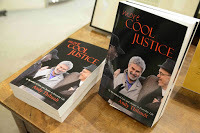
more COOL JUSTICE website
Cool Justice Blog
Published on October 23, 2015 11:56
October 13, 2015
So Long, Bob Leuci, Friend of Young Writers
UPDATED, w/ 2010 New Year’s Day podcast...
- photos by Bob Thiesfield
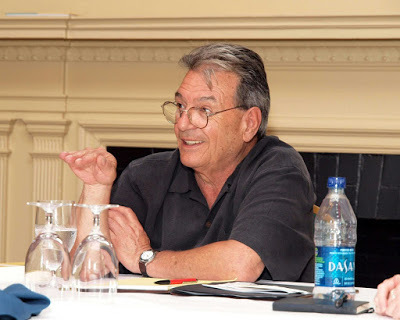
Bob Leuci leading a workshop for young writers at The Hartford Club, June 3, 2010.

Bob Leuci on June 3, 2010 with Zeena Advani of Westhill High School, Stamford, the Fairfield County Prose Champion for the Connecticut Young Writers Trust.
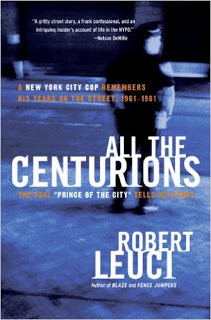
His perilous undercover work as a so-called Prince of the City in the 1970s exposed endemic corruption among fellow detectives ...
NY Times Report
NY Post: Graft-fighting NYPD cop Robert Leuci dies at 75
Providence Journal: Robert Leuci found true calling as writer in R.I.
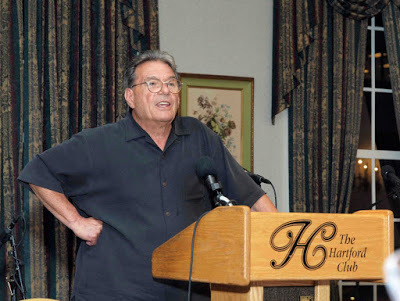
Delivering Keynote Speech

Reading from a boxing ring, Jan. 15, 2010
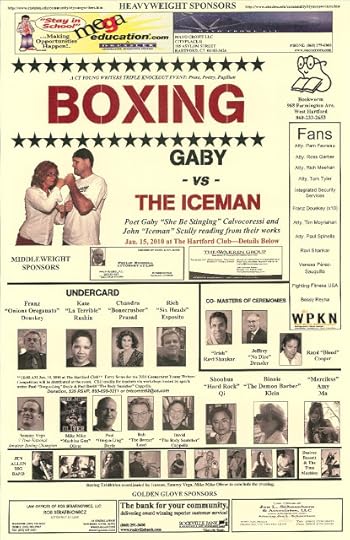

PODCAST: Bob Leuci & Sammy Vega, Jan. 1, 2010
Tweet
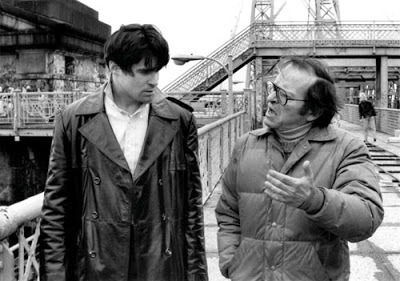
-- Actor Treat Williams With Director Sidney Lumet During Filming of Prince of the City
Trailer: IT HAPPENED
Undercover Life Gets Complicated
Among Leuci's titles:
All the Centurions: A former New York City narcotics detective discusses his work on such film-inspiring cases as the French Connection and Serpico, and shares his disillusionment in the face of corruption, and the criminal justice system's dark side.
Fence Jumpers: As kids, they took on New York's mean streets. As men, they're on opposite sides of the law. Dante O'Donnell and Jimmmy Burns took up the oath, the badge and the gun of the police force. Jo Jo Paradiso took a different path as a rising player in the Paradiso crime family. Today the three friends are trapped in an ever-more-vicious game of betrayal -- one that threatens to break much more than the bonds of their youth.
Odessa Beach: A Russian and the American mob make strange bedfellows in a brilliantly plotted masterpiece of cross-cultural criminality. The book is set in Brighton (renamed Odessa) Beach, Brooklyn, where Nikolai Zoracoff has defected from Moscow -- not seeking political asylum but escape from the KGB. A charming hedonist and a criminal only because in Moscow luxury is bought by crime, Zoracoff's assimilation into America includes cowboy hats, Dolby stereo and a drug connection which, in New York, means an alliance with the Mafia -- and a game which is harder than Zoracoff can bear.
Blaze: A rising star in the NYPD, Captain Nora Riter has a private life that threatens to torpedo her career. A streetwise actor/conman Nicky Ossman faces prison for assaulting a vice cop. Nora needs Nicky to help her re-establish personal and professional control as she takes on a case that leads her to taking down a psychopathic criminal kingpin known as "Blaze."
Captain Butterfly: This is a riveting thriller about police corruption and the labyrinth of the human heart.
The Snitch: A highly-principled police detective is chosen to infiltrate the notoriously corrupt Organized Crime Control Bureau. When the OCCB raid a nightclub, leaving seven people dead, the powers that be decide a major bust would look better than a police corruption case -- only the detective refuses to compromise his principles.
Renegades: A thriller about three friends who grow up together on the tough streets of New York. Their friendship, loyalty and courage are tested when two become policemen and the other becomes a mafia boss.
Double Edge: A tough, all-too-human police drama set on the dangerous streets of Washington, D.C. Cotton is a crack dealer who's seen it all. Scot Ancelat is a detective who's seen too much. In a vivid, brutal tale, their stories intertwine, as Ancelat struggles to solve the senseless murder of a young boy.
Selected Links For LEUCI BOOKS
Prince Of The City: The True Story Of A Cop Who Knew Too Much
All The Centurions: A New York City Cop Remembers His Life On The Street
Captain Butterfly
Odessa Beach
The Snitch
Doyle's Disciples
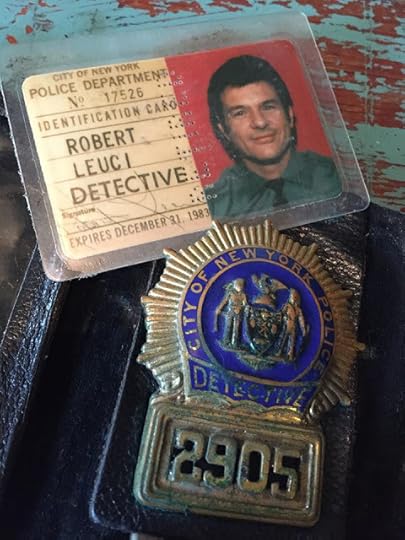
Cool Justice Blog
Published on October 13, 2015 19:14
October 9, 2015
WNHH Radio 103.5 FM features 'more COOL JUSTICE'
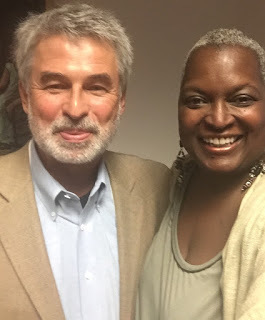
Hosted by Babz Rawls Ivey, Editor of The Inner-City News
Foreshaw, Showalter, Badaracco, Boston Marathon bombing and New Orleans missing person cases noted – along with Louis The Coin’s memoir – on The New Haven Independent’s 'LoveBabz LoveTalk' show

BY Staff | OCT 9, 2015 12:19 PM
Was It Murder?
“Usually you write about injustice and nothing happens. This time something happened.”
Complete story and audio via New Haven Independent
Tweet
Recent library appearance:
Foreshaw & Thibault uncensored library discussion; Bob Thiesfield photo gallery
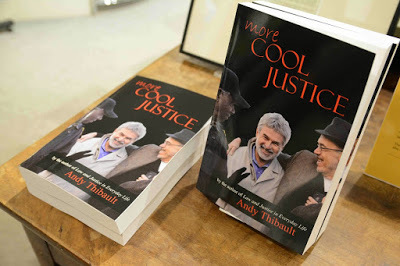
more COOL JUSTICE website
Cool Justice Blog
Published on October 09, 2015 13:43
October 2, 2015
Podcast posted; Foreshaw & Thibault uncensored library discussion; Bob Thiesfield photo gallery
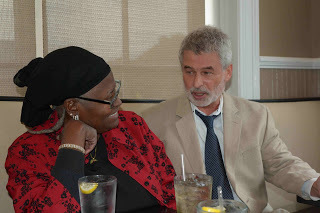
Podcast via Oliver Wolcott Library
EDITOR'S NOTE: Bonnie starts around the 20-minute mark ...
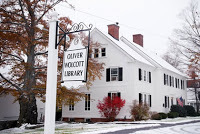
Photos by
BOB THIESFIELD
at the Oliver Wolcott Library, Litchfield, CT
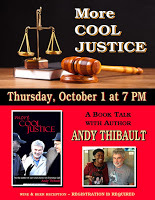
Background
Library podcast page
Library website
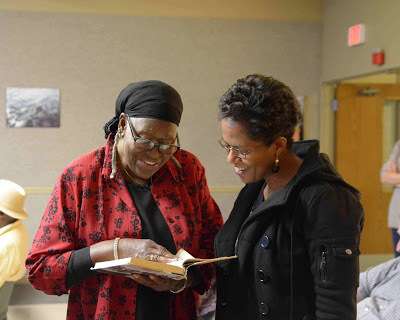

- Bonnie Foreshaw and LuVonney LaMar peruse the second collection of essays by prisoners at the Niantic jail -- "I'll Fly Away" -- which Lamar recorded as an audio book for blind.
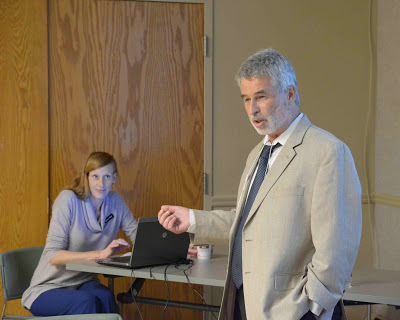
- Librarian Heather Wilder at the video controls as more COOL JUSTICE author Andy Thibault opens the program.
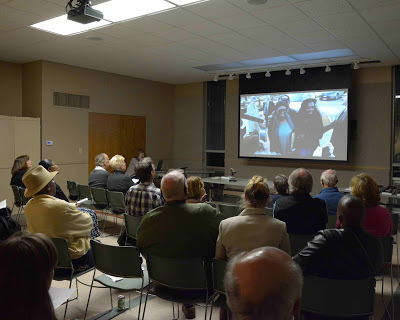
- Screen shot of Bonnie's first day of freedom 11-15-13 as gathering listens to WCBS 880 news report.
Table Setter Via WCBS 880 News
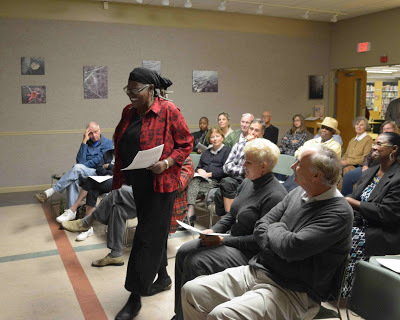
- Bonnie takes the stage
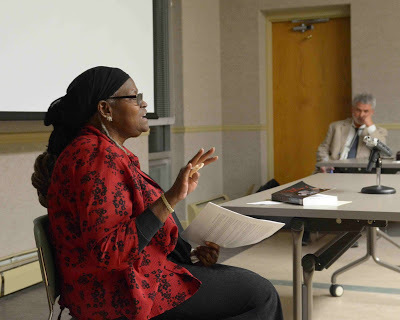
- Bonnie talks about surviving prison life for more than 27 years, the suffering women she left behind, the remorse she feels every day for taking another person's life in an accidental shooting and the benefits of the Wally Lamb writing workshops in gaining self awareness and alleviating depression.
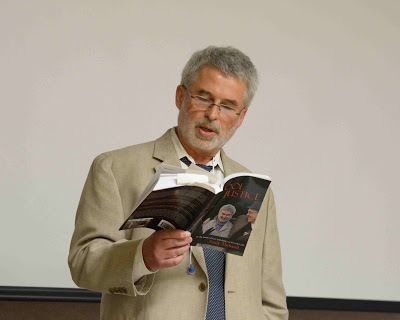
- more COOL JUSTICE: afflicting the comfortable and comforting the afflicted.
Tweet

more COOL JUSTICE website
Cool Justice Blog
Published on October 02, 2015 07:17
#moreCOOLJUSTICE Foreshaw & Thibault uncensored library discussion 10-1-15; Bob Thiesfield photo gallery; podcast to follow

Photos by
BOB THIESFIELD
at the Oliver Wolcott Library, Litchfield, CT

Background
Library website


- Bonnie Foreshaw and LuVonney Lamar peruse the second collection of essays by prisoners at the Niantic jail -- "I'll Fly Away" -- which Lamar recorded as an audio book for blind.

- Librarian Heather Wilder at the video controls as more COOL JUSTICE author Andy Thibault opens the program.

- Screen shot of Bonnie's first day of freedom 11-15-13 as gathering listens to WCBS 880 news report.
Table Setter Via WCBS 880 News

- Bonnie takes the stage

- Bonnie talks about surviving prison life for more than 27 years, the suffering women she left behind, the remorse she feels every day for taking another person's life in an accidental shooting and the benefits of the Wally Lamb writing workshops in gaining self awareness and alleviating depression.

- more COOL JUSTICE: afflicting the comfortable and comforting the afflicted.
Tweet

more COOL JUSTICE website
Cool Justice Blog
Published on October 02, 2015 07:17
September 25, 2015
via @nhregister Bonnie Foreshaw, author to appear at library in Litchfield
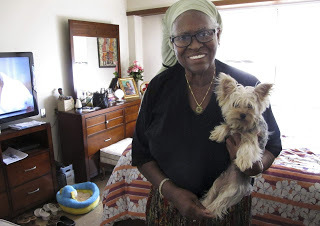 Andy Thibault, a former contributing editor and columnist for Digital First Media in Connecticut, will join a woman he helped free from prison for a book discussion Oct. 1 at 7 p.m. at the Oliver Wolcott Library in Litchfield. The event is free and open to the public; the library asks guests to pre-register under events at its website, http://www.owlibrary.org/.
Andy Thibault, a former contributing editor and columnist for Digital First Media in Connecticut, will join a woman he helped free from prison for a book discussion Oct. 1 at 7 p.m. at the Oliver Wolcott Library in Litchfield. The event is free and open to the public; the library asks guests to pre-register under events at its website, http://www.owlibrary.org/. Registration form
Thibault’s second collection of columns — more COOL JUSTICE (http://morecooljustice.com/) — leads off with the story of Bonnie Foreshaw, who served more than 27 years on a charge of premeditated murder of a woman she had never met. Foreshaw was granted a clemency hearing and ultimately freed after Digital First Media published a memo [The-Blue-Note] by former public defender Jon Blue – now a Superior Court judge who presided over the Cheshire murder cases. Blue and others argued the proper charge for the accidental shooting should have been manslaughter.
THE BLUE NOTE
The memo was made public in a Cool Justice column published in May 2013 by the New Haven Register, The Register Citizen of Torrington, The Middletown Press and Litchfield County Times. Foreshaw was granted clemency six months later after the state reversed a decision denying her a hearing.
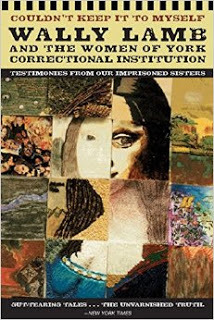 Foreshaw, a contributor to the acclaimed prison journals “Couldn’t Keep It To Myself” and “I’ll Fly Away,” has begun work on a memoir.
Foreshaw, a contributor to the acclaimed prison journals “Couldn’t Keep It To Myself” and “I’ll Fly Away,” has begun work on a memoir. Complete Article
Hartford Courant Entertainment / Arts & Theater Page Advances #moreCOOLJUSTICE Event at #OliverWolcott Library
Tweet

more COOL JUSTICE website
Cool Justice Blog
Published on September 25, 2015 16:01
September 24, 2015
Hartford Courant Entertainment / Arts & Theater Page Advances #moreCOOLJUSTICE Event at #OliverWolcott Library
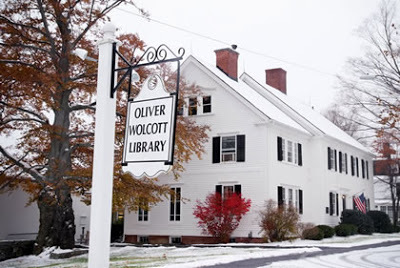
'More Cool Justice'
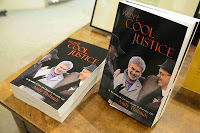 On Thursday, Oct. 1, at 7 p.m., at Oliver Wolcott Library, 160 South St., Litchfield, author and investigator Andy Thibault will read from his essay collection about problems in the criminal justice system, "More Cool Justice" (Icebox, $20). One essay helped free Bonnie Foreshaw, who had been unjustly convicted of premeditated murder. Foreshaw will speak at the event.
On Thursday, Oct. 1, at 7 p.m., at Oliver Wolcott Library, 160 South St., Litchfield, author and investigator Andy Thibault will read from his essay collection about problems in the criminal justice system, "More Cool Justice" (Icebox, $20). One essay helped free Bonnie Foreshaw, who had been unjustly convicted of premeditated murder. Foreshaw will speak at the event. 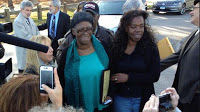 Thibault is also chairman emeritus of the Connecticut Young Writers Trust and was honored in 2014 by the Connecticut Council on Freedom of Information with the Stephen Collins Award.
Thibault is also chairman emeritus of the Connecticut Young Writers Trust and was honored in 2014 by the Connecticut Council on Freedom of Information with the Stephen Collins Award. Information: morecooljustice.com Registration: owlibrary.org/programs
Text above was the FINAL ITEM posted by Courant Entertainment / Arts & Theater Page on 9-24-15:
Complete Article
Registration form
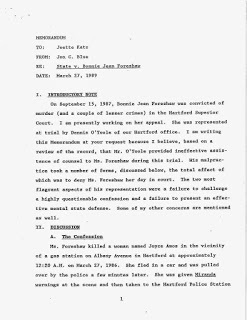 Table Setter Via WCBS 880 News
Table Setter Via WCBS 880 NewsTHE BLUE NOTE
What is more COOL JUSTICE?
Associated Press: Bonnie Foreshaw To Write Book & Help Others Getting Out Of Prison; Ask Bonnie About Her Memoir 10-1
Tweet
Cool Justice Blog
Published on September 24, 2015 06:26
September 7, 2015
Associated Press: Bonnie Foreshaw To Write Book & Help Others Getting Out Of Prison; Ask Bonnie About Her Memoir 10-1

Published September 07, 2015
Associated Press
Connecticut woman adjusting to modern society after 27 years in prison on murder conviction
EAST HARTFORD, Conn. – A Connecticut woman released from prison in 2013 after serving 27 years for murder says life on the outside has its own challenges, including living on a small pension and Social Security ... Her supporters argued she should have been convicted of manslaughter and released years ago ...
Complete Article
Background
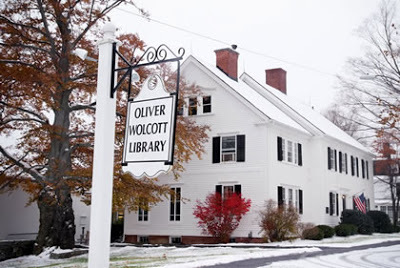
10-1 event
more COOL JUSTICE
Cool Justice Twitter
Tweet
Cool Justice Blog
Published on September 07, 2015 15:23
September 5, 2015
Flashback: Significance of #BlueNote Cannot Be Overstated #BonnieForeshaw Case; & Forthcoming Event 10-1-15
THE BLUE NOTE
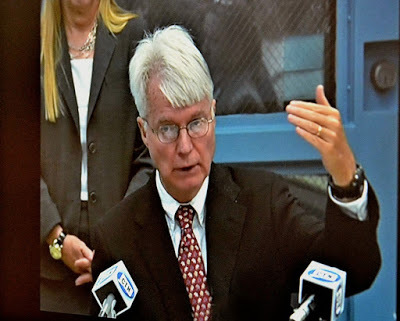
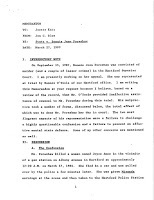
TRANSCRIPT follows
via WNPR-fm
August 5, 2013
09:15 am ET
Hartford, Connecticut
Cool Justice Editors Note:
Prosecutors hid arrest record of man who used pregnant woman as human shield
The prosecution conveniently failed to disclose that Hector Freeman had pending charges for assault of a police officer. A judge ruled Freeman’s tainted testimony against Bonnie Foreshaw was just fine. That’s the way it works when the forces of the state want a conviction for an inflated charge regardless of the facts.
WNPR-fm
August 5, 2013
09:15 am ET
Hartford, Connecticut
JOHN DANKOSKY: Coming up next, we’ll talk about Bonnie Foreshaw, a woman who’s waited 27 years for a clemency hearing, despite a memo from a lawyer who said her trial was unfair. You can join the conversation, 860-275-7266. This is Where We Live.
[Break]
DANKOSKY: This is Where We Live. I’m John Dankosky. Twenty-seven years ago, Bonnie Foreshaw received the longest prison sentence ever given to a woman in Connecticut for shooting a pregnant woman. The woman and her baby died, but that is not by far the entire story. The pregnant woman was being used as a shield by a man that Bonnie feared would hurt her. Foreshaw suffered sexual and domestic abuse throughout her life and carried a gun for protection against an abusive husband who’d previously fractured her skull. Foreshaw’s public defender never mentioned her history of emotional abuse and distress, the questionable circumstances surrounding her confession, nor the conflicting eyewitness accounts of the crime. Despite all this and despite a stellar prison record and a redemptive memoir edited by Connecticut novelist Wally Lamb, she’s lost appeals and been twice denied clemency hearings. A new piece of evidence, though, has brought attention back to this case. Joining us today is Andy Thibault, who’s contributing editor and columnist for the Journal Register Company who has been following this story very, very closely. He joins us in the studio. Andy, welcome to the show.
ANDY THIBAULT: Nice to be here, John.
DANKOSKY: And WNPR reporter Diane Orson, who’s working on a story about Bonnie Foreshaw. Welcome back, Diane.
DIANE ORSON: Thanks, John.
DANKOSKY: Diane, what brought this case to your attention?
ORSON: Well, I’d read that a woman in prison at York Correctional Institution in Niantic, named Bonnie Foreshaw, had been granted a clemency hearing and I recognized her name because years ago when I first came to Connecticut Public Radio, I worked as a co-producer for the show Open Air New England with Faith Middleton and I remembered that Faith had actually interviewed Bonnie Foreshaw. It was in the early nineties. Anyway, I contacted Faith and she got back to me and confirmed that this was the same person and I began to research the case.
DANKOSKY: So, tell us Bonnie Foreshaw’s story. What exactly happened.
ORSON: Well, you gave a good summary, but let me just go back and sort of fill in some of the details. March 27, 1986, Bonnie Jean Foreshaw – she was then 38 years old – a machinist at the Wire Mold Company in Hartford, she was shop steward, she was active in her union, she was supporting her children, she went to a Jamaican social club on Albany Avenue in Hartford and there she met a man who she’d never met before, named Hector Freeman, who wanted to buy her a drink. She refused him. He was persistent. She was in no mood and she left the club. At this point it’s important to mention that this is a woman who lived a very traumatic life. She is truly a battered woman. She’d been assaulted over and over again. She’d endured physical, verbal, sexual violence as a child. Later she was the victim of, as you said, horrible abuse by three husbands, stuff I don’t even want to talk about on the air. But suffice to say, I mean, she’s been beaten by a baseball bat, all kinds of horrible things. Bonnie Foreshaw made a decision to buy a .38 caliber gun for protection because her third husband was still stalking her and she felt threatened. So, back to the night of shooting, Hector Freeman follows her outside. He continues to sort of shout insults at her. And at this point I want to mention a documentary film was made in the mid-nineties about this case and it’s called The Nature of the Beast. It’s quite comprehensive. And at this point I’d like to play an excerpt from that film. This is the voice of Bonnie Foreshaw from an interview in prison describing, in her words, what happened that night.
BONNIE FORESHAW [IN FILE VIDEO]: [Indistinguishable] with his hands in his pocket and he was cursing and threatening. And all I wanted to do was get in my car. And before I could do that, he came towards me with his hands, cursing, threatening. I pulled my gun out and shot, you know, and just shot once. Next thing I know, the lady fell, the man stopped, I got in my car and left. About 20 minutes later I was pulled over and arrested and charged with murder, which I found out the next day that the lady had died and I was told in court that I was going to be charged with double murder because she was pregnant. I didn’t know him, I didn’t know her and she was just there trying to keep him from bothering me.
ORSON: So, as you heard, she was pulled over and what happened was Hector Freeman, the man, had pulled this woman, Joyce Amos, in front of him as a shield. This was a woman who had stepped in to try and diffuse the situation.
DANKOSKY: Somebody that Bonnie Foreshaw did not know.
ORSON: Did not know. Now let’s listen to an excerpt from a Channel 3 Eyewitness News report that took place right after the shooting.
NEWSCASTER [IN FILE VIDEO]: Hartford police have arrested Bonnie Foreshaw Bloomfield in connection with the shooting. She was arraigned this morning here at Hartford Superior Court. Family members say 28-year-old Joyce Amos had gone out shortly after midnight for cigarettes. A short time later a family friend came to tell them Amos, who was pregnant, had been shot on Albany Avenue a short distance from their home.
UNIDENTIFIED SPEAKER [IN FILE VIDEO]: The first officers to arrive at the scene discovered that a pregnant female had been shot in the upper chest area.
UNIDENTIFIED SPEAKER [IN FILE VIDEO]: It was a boy. When they took the fetus, it was a boy.
UNIDENTIFIED SPEAKER [IN FILE VIDEO]: Certainly not closing out the possibility of bringing additional charges against the defendant. Right now we are going to be waiting for the autopsy report to see if in fact the fetus would have lived outside the mother’s womb. We’re going to be doing a good deal of research on case law in other states.
REPORTER [IN FILE VIDEO]: Bailey says some states have dealt with charging a suspect with the murder of a fetus, but it is a grey legal area. The hospital today released photographs of Amos’ unborn child. When looking at them, family members say regardless of the legal resolution of this case, they feel as if though they had lost two members of their family.
UNIDENTIFIED SPEAKER [IN FILE VIDEO]: Who shoots a pregnant woman?
ORSON: So, eventually what happened was the judge ruled that she could not be tried for the death of the fetus, but she was tried in 1987 for murder, not for manslaughter. Murder means intentionally causing the death of someone, premeditated murder. She’d never met either Hector Freeman or this woman, Joyce Amos, until the night of the shooting. So, she was arrested, you know, as we heard, minutes after the shooting. She was taken in, she was interrogated. Around 2:00 in the morning she hand-wrote out a confession, but she did not sign it. So, Bonnie has been represented over the years by a lot of people, like 20 different lawyers or something like that. A public defender was appointed to represent her for the death of Joyce Amos, the woman who had stepped – had been used as a shield – stepped into the situation. There are numerous questions, which we’re going to hear from Andy Thibault a little bit more about, about the way her case was handled in court. But the biggest question is why the public defender did not educate the jury about Bonnie Foreshaw’s history, a history that was really critical for people judging her as jurors to understand in order to make sense of why a battered woman might be carrying a gun, why she might shoot it if she felt threatened in self-defense. None of that was part of the trial. Instead, the jury found her guilty. She was given at the time, as you said, believed to be the longest sentence ever imposed in Connecticut’s history on a woman, a 45-year prison sentence. And so she has been incarcerated since then. She was 38 when she was arrested. She’s going to be I think 66 later this month. She’s been behind bars for more than 27 years.
DANKOSKY: I want to bring in Andy Thibault now to talk a bit about this. And as we get to this new piece of evidence, maybe you can shed a little more light on something that Diane was hinting at with that piece of audio from the documentary about why exactly she was charged with murder, why she was given such a very long sentence in this case.
THIBAULT: I think her charges were jacked up to advance the careers of prosecutors and cops and these charges had no basis in reality. In fact, I believe there’s an ongoing criminal conspiracy to violate Bonnie Foreshaw’s civil rights. I base that on a fake drug raid that was designed to dismantle her defense, the suspicious withdrawal of the motion to suppress her coerced confession. There’s a five-hour gap. We don’t know what happened between 2:00 and 7:00 a.m. and the prosecutor, James Thomas, falsely stated that Bonnie was a known drug seller, though he knew no drugs had been found. So, it was a setup. Bonnie, in effect, faced three prosecutors; the judge, the prosecutor James Thomas who stepped on a black woman victim of abuse and made her a poor woman by engineering the seizure of her house and diverting 80 grand that she could have used for a good private attorney.
DANKOSKY: And perhaps the public in that we have never seen a case quite like this in Connecticut. A pregnant woman is shot. Both the woman and the fetus die. How much did public sentiment about that act, how much did that lead to it?
THIBAULT: The prosecutors were very savvy in their manipulation of the media, but I’d like to quote Bonnie Foreshaw, who saw Joyce Amos as a good Samaritan, and said: I never lost sight of the fact that I still had my life and Joyce Amos, the lady who tried to help me that night, had lost hers.
DANKOSKY: So, aside from what you’re calling an ongoing conspiracy that started with this charge and has gone for this many years, there’s this extra story – and this is the story of her representation at the time. Maybe you can talk about the letter that has recently come to light, a letter that you published, that maybe will, again, shed a little bit of light about what happened in and around the courtroom when Bonnie Foreshaw was being charged and being sentenced.
THIBAULT: Sure. The significance of the Blue Note cannot be overstated. When I think, when I conceptualize this memo, which I’ve read 50 times, it’s more powerful each time. I think of Muhammad Ali, Cassius Clay, standing over Sonny Liston. I think of the Twin Towers. Once you look at it, you can’t turn away. I can read a few excerpts.
DANKOSKY: And, again, explain the Blue Letter just so that people understand.
THIBAULT: Judge John Blue, who was the presiding judge in the Cheshire Home Invasion case, in an earlier life, was a public defender. He was asked by Joette Katz, then a supervisor in the PD office –
DANKOSKY: Now who’s the head of the DCF.
THIBAULT: Right.
DANKOSKY: Former Supreme Court judge.
THIBAULT: Who is now a supporter of Bonnie Foreshaw’s clemency, as is Senator Blumenthal, which I think is very significant. I think the stars are aligned for some morsel of justice for Bonnie now. But from the Blue Note: A former husband had beaten Ms. Foreshaw in the head with a baseball bat a few years before the crime and she had spent two weeks in the hospital. No hospital records were produced. No neurologist was produced. The jury learned little or nothing about Ms. Foreshaw and what was really happening in her mind. She did not have an effective defense.
ORSON: This was a memo written by then public defender John Blue to Joette Katz and he did this before he assumed the bench.
DANKOSKY: Essentially saying that the representation that she got by a public defender was incompetent in a series of different ways. And why did this not come to public knowledge? Why did we not see this until just now?
THIBAULT: Well, Joette Katz became a judge and John Blue became a judge on the same day, so in effect their hands were tied for the – they can’t get involved in any cases. However, this 24-year-old memo has been around for a while. A lot of people have seen it. It came to light 12 years ago that I know about for sure when Richard Emanuel found it, who’s now part of her legal team, which is managed by Mary Werblin, who of all her many lawyers, she’s clearly the one who has put Bonnie Foreshaw’s interest first and recognizes that Bonnie is the client.
DANKOSKY: We’re talking with Andy Thibault, who’s a contributing editor and columnist for the Journal Register Company Connecticut Group who’s been writing extensively about the Bonnie Foreshaw story and brought this Blue Note, as he calls it, to light. WNPR’s Diane Orson has been following the story for us and she joins us in studio as well. Another piece of this, Diane, is who Bonnie Foreshaw has become during the time that she’s been in prison these many, many years.
ORSON: Well, she’s actually a member of a writing group that is led by Connecticut author Wally Lamb. And I had a chance to speak to Wally Lamb last week about his I think 14-year relationship now with Bonnie Foreshaw as a student in his writing group. He has this writing program at the Niantic Prison and he tells me that he feels like the people that are in Connecticut’s prisons are voiceless populations, people who are marginalized, and he wants to let them have a safe place to tell their story. So, anyway, he spoke with me about Bonnie Foreshaw and I’d like to play a little excerpt from my conversation with him.
WALLY LAMB: One of the things that I learned very quickly is how much respect Bonnie has at the prison, not only from inmates, but also from the guards and that comes from her long history of being a model prisoner. She never causes any trouble. She is very humble, very remorseful. And, you know, she said Joyce Amos was a mother, I’m a mother. She’s now a grandmother and I believe a great grandmother at this point. She was one of the first graduates of the York Hospice Program and so she has attended to dying inmates. And she has also worked for literacy volunteers. She has been a surrogate mother and now, more recently, a surrogate grandmother, for a lot of the inmates, many of whom have not had very good mother-daughter experiences. And so she’s just, you know, to see her sort of warehoused there year after year after year, after what I consider to be a grave injustice done to her in terms of her original charge and the sentence, it’s heartbreaking.
ORSON: I just want to say I don’t think anyone in this story is seeking to exonerate Bonnie Foreshaw for what she did. I mean, a terrible thing happened. No one is claiming that she did nothing wrong. I think the question here is did our system do justice to this battered woman? Was she treated justly? Should she still be behind bars after 27 years? Was the charge inflated because the victim had been pregnant? These are some of the kinds of questions that this case raises.
DANKOSKY: Andy Thibault, why after all these years, given all of this evidence, given what we hear Wally Lamb saying about a model prisoner who has done so much during her time there, why has she not gotten clemency? Why has she not gotten out of prison?
THIBAULT: Well, it’s a fixed game and it’s no question this is a gross injustice and a shame for the state of Connecticut. I’d like to read a quote from Evan Stark, who’s a social worker who’s worked a lot for the prosecution. And he said, had Bonnie not been made stuperous by medication or had her character been accurately depicted, the prosecution would have been forced to answer the question that never surfaced at her trial: Why would a deeply religious woman in the throes of separating from her abusive husband with no history of violence, a good job and a happy family life, good home and excellent future prospects, risk all by shooting a man she had never met? Now, that fake drug raid I mentioned, a key player was Detective Kumnick, who is now the right-hand man of the Hartford State’s Attorney, Gail Hardy. So, I contend that her office and her actions are tainted in this case and others by using a guy like Kumnick. The judge, the public defender, the prosecutor, they all work for the state. They’re all on the same team. The state does not admit mistakes.
DANKOSKY: When it comes to some of the connections that you’re making, what evidence do you have about this fixed game, Andy?
THIBAULT: There was a fake drug raid that was used to dismantle her defense. You’ve got cops saying, oh, there’s all these guys who look like Rastafarians with guns running around Bonnie Foreshaw’s house. They make the drug raid, they seize her house, and on the court documents, nothing found, no drugs. The confession that was coerced in which she stated, I don’t want to sign this, immediately when Detective Murdock is called to the witness stand, the quote-unquote – I hate to say it – public defender, withdraws the motion to suppress the confession. Is that not suspicious? What did the prosecutor have on this guy? Nobody’s that stupid.
DANKOSKY: So, what happens next? There is a clemency hearing now scheduled for October.
THIBAULT: Right.
DANKOSKY: What exactly happens in the saga of Bonnie Foreshaw next?
THIBAULT: Well, you never know what’s going to happen because everybody in the system is a political appointee, however, the chairperson of the Parole and Pardons Board said that this is new and compelling evidence and that they’re taking another look because of the Blue Note. I challenge anyone to look at the Blue Note and come to any other conclusion that if Bonnie Foreshaw had been charged properly with manslaughter, she would have been free many years ago.
DANKOSKY: I know, Diane, that you’ve spoken with some of the lawyers involved in her defense and we’d asked them to join us for this conversation today, but given this pending clemency hearing they declined
ORSON: Correct.
DANKOSKY: And they declined, in part, because they feel perhaps that they have a stronger case this time around from what I understand.
ORSON: We’ll see.
DANKOSKY: This story is remarkable and I thank you both for bringing it back to my attention. Diane Orson covers not only the courts, but also education and many other things for WNPR and she’s been covering this story and spoke recently with Wally Lamb and we’ll be hearing more from that interview and more on this story from Diane in the coming weeks. Thank you so much, Diane.
ORSON: Thank you.
DANKOSKY: I also want to thank Andy Thibault, who is with the Journal Register Company Connecticut Group, who’s a contributing editor and he brought this Blue Note, as he calls it, to our attention and we’re going to make more links available at WNPR.org. Andy, good to see you. Thank you so much for being here.
THIBAULT: Thanks so much, John.
8-5-13: WNPR Podcast [at about 18-minute mark]
11-15-13: Bonnie Foreshaw Goes Free
Thibault, Foreshaw to speak at ‘more COOL JUSTICE’ event, 10-1-15
more COOL JUSTICE
Cool Justice Twitter
Tweet
Cool Justice Blog
Published on September 05, 2015 08:15

